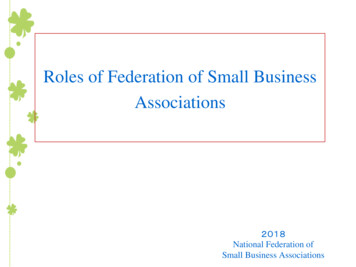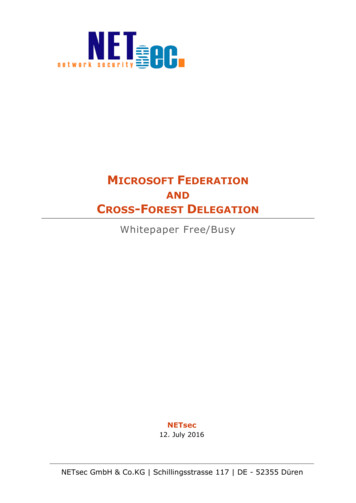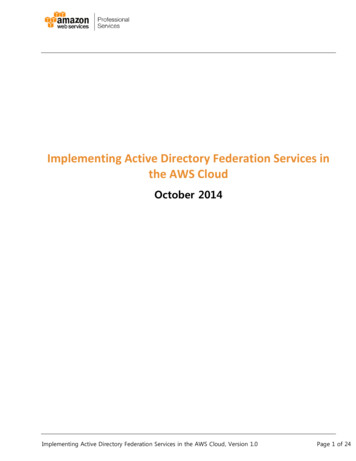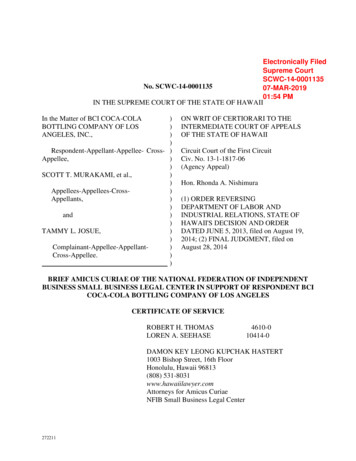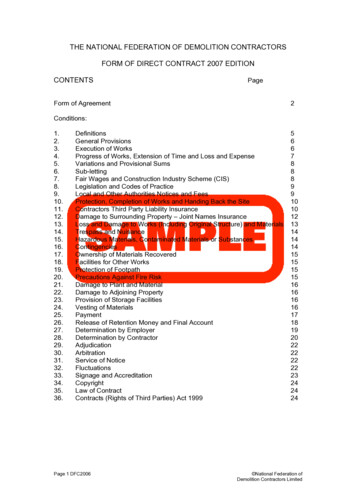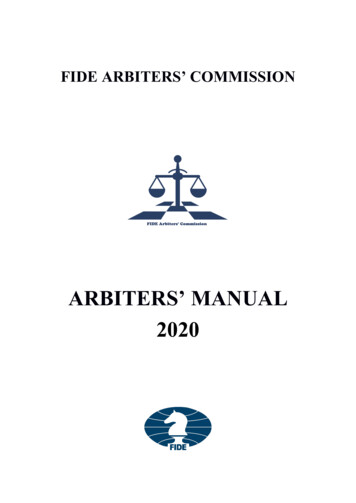
Transcription
FIDE ARBITERS COMMISSIONARBITERS MANUAL2020
ii
FIDE President’s welcomeDear chess friends,The FIDE Arbiters’ Commission represents one of the most numerous commissionsin the FIDE family, counting over 14,000 licensed arbiters, and plays an essential rolein the development of chess all over the world.In addition to the organization of seminars and workshops and to the regularpublication on its website of guidelines and new contents for all chess arbiters, animportant achievement of the FIDE Arbiters’ Commission is represented by theArbiters' Manual, which was created several years ago in the belief that it wasimportant to have policies and procedures which could be easily accessible and ofgreat assistance to the arbiters, the National Chess Federations, the players andeveryone who is involved in the organization of chess tournaments all over the world.The Arbiters' Manual has now been updated, and the readers will find in this book thenew regulations and all necessary documents for chess arbiters to be guided in theirdaily activities by a team of the most experienced experts of this field. I sincerelyhope that this book will be an essential tool for the training of future arbiters and willcontribute to increase the number of qualified professional chess arbiters in the worldand to further enrich their skills in order to allow them to exercise their duties in thebest possible way.I am proud to express my deepest gratitude to the FIDE Arbiters’ Commission and toeveryone who contributed to the creation of this new issue of the Arbiters' Manual.Arkady DvorkovichFIDE Presidentiii
iv
INTRODUCTIONDear fellow arbiters, dear friends,This manual is yours!Since the first edition published in 2013, the Arbiters' Manual has been a reference forthousands of chess arbiters worldwide. It has been evolving over time, addingregulations, sharing examples or comments, removing obsolete parts .Year after year, it has been aggregating the experience of colleagues passionatelyinvesting their energy in making the manual better! More than a teamwork, our manualis a concrete illustration of the FIDE motto: Gens Una Sumus we are one family. Onefamily with other commissions who produce regulations that we have to apply intournaments; and especially with arbiters sharing various views or feedback. Thank youall for your contribution in helping our sector to grow!This edition is a reorganised version of the Arbiters' Manual. Apart from updatingregulations, the sequence of chapters is intended to better fit with the job of an arbiter,from practical subjects related to the playing sessions to more technical oradministrative topics. Although a wider audience than the arbiters' communityappreciates our manual, the primary goal is to provide a good tool to our colleagues. Inthis view, the role and duties of an arbiter were moved to Chapter 1, even before theLaws of Chess, as the first move of our strategy to foster the growth of chess arbiters!Our team also took some time to review comments and interpretations, so that youbenefit from better added value when studying the subjects.For all these reasons, the FIDE Arbiters' Commission is proud to release the Arbiter'sManual 2020!Wishing you good reads and even better tournaments!Laurent FREYDChairmanFIDE Arbiters Commissionv
Revisions listVersion NumberDateChanges0001 Oct 2017Initial Version0131 Dec 20172018 version,FIDE laws changes taking effect fromJanuary 2018 (Articles 7.5, 7.6, 7.7, 7.8,A.4.2, A.4.3, A.4.5)Addition: Guidelines for the organisersFIDE Swiss Rules C.04.2.A: the wholesection has been rewritten, C.04.2.B.3: aclarification0201 Sep 2018Some minor grammatical corrections,New Anti-cheating guidelines for Arbiters,Title norms example correction0301 July 2019Some minor grammatical correctionsGeneral Rules and TechnicalRecommendations for TournamentsNew General Regulations for CompetitionsAddition: Regulations for the classificationof the Chess Arbiters04April 2020Some minor grammatical correctionsReorder chaptersRevise some of interpretationsFIDE Rapid and Blitz Rating RegulationsNew Standards of Chess Equipment, Venue,for FIDE Tournaments, Rate of Play and Tiebreak RegulationsNew General Rules and TechnicalRecommendations for Tournaments
Table of contentsCHAPTER 1: THE ROLE OF THE ARBITERS AND THEIR DUTIES . 1Summary of the general duties of an Arbiter . 3CHAPTER 2: THE FIDE LAWS OF CHESS (E01) . 5A Brief History of the Laws of Chess . 5INTRODUCTION . 7PREFACE . 7BASIC RULES OF PLAY. 8Article 1: The nature and objectives of the game of chess . 8Article 2: The initial position of the pieces on the chessboard. 9Article 3: The moves of the pieces . 11Article 4: The act of moving the pieces. 16Article 5: The completion of the game . 18COMPETITION RULES . 19Article 6: The Chessclock . 19Article 7: Irregularities . 25Article 8: The recording of the moves . 28Article 9: The drawn game . 30Article 10: Points . 33Article 11: The conduct of the players . 34Article 12: The role of the Arbiter (see Preface) . 37APPENDICES . 39Appendix A. Rapid chess . 39Appendix B. Blitz . 41Appendix C. Algebraic notation . 42Appendix D. Rules for play with blind and visually disabled players . 45Guidelines . 48Guidelines I. Adjourned games . 48Guidelines II. Chess960 Rules . 50Guidelines III. Games without increment including Quickplay Finishes . 52Glossary of terms in the Laws of Chess . 54CHAPTER 3: ANTI-CHEATING GUIDELINES (B06 ANNEX 6) . 59Recommendations for Arbiters . 59ix
1.How breaches of AC regulations may occur during the game: . 602.Applicable precautions: . 603.Screening games for precaution and information: . 614.How to deal with suspicious behavior: . 615.How to deal with the new Article 11. 3 of the Laws of Chess: . 626.How to deal with accusations: . 63CHAPTER 4: TYPES OF TOURNAMENTS . 641. Round Robin System . 642. Swiss Systems . 653. Scheveningen System . 674. Skalitzka System . 705. Other systems . 715.1 Matches . 715.2 Knock‐out . 71CHAPTER 5: FIDE SWISS RULES (C04) . 72Basic rules for Swiss Systems (C04.1) . 72General handling rules for Swiss Tournaments (C.04.2) . 73A.Pairing Systems . 73B.Initial Order. 74C.Late Entries . 75D.Pairing, colour and publishing rules . 76FIDE (Dutch) System (C04.3) . 77A.Introductory Remarks and Definitions . 77BPairing Process for a bracket . 80CPairing Criteria . 83DRules for the sequential generation of the pairings . 85EColour Allocation rules . 86FIDE-approved Accelerated Systems (C04.5). 87Baku Acceleration . 88CHAPTER 6: FIDE RATINGS (B02). 89FIDE Rating Regulations (B02) . 890.Introduction . 891.Rate of Play . 902.Laws to be followed . 90x
3.Playing Time per Day . 904.Duration of the Tournament: . 905.Unplayed Games. 906.Composition of the Tournament . 917.Official FIDE Rating List . 918.The
Dear chess friends, . hope that this book will be an essential tool for the training of future arbiters and will contribute to increase the number of qualified professional chess arbiters in the world and to further enrich their skills in order to allow them to exercise their duties in the best possible way. I am proud to express my deepest gratitude to the FIDE Arbiters’ Commission and to .
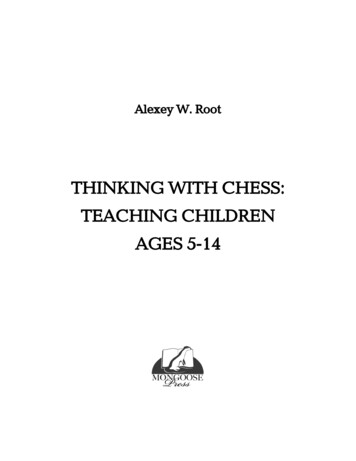
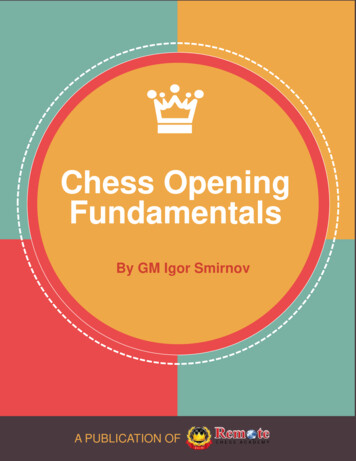
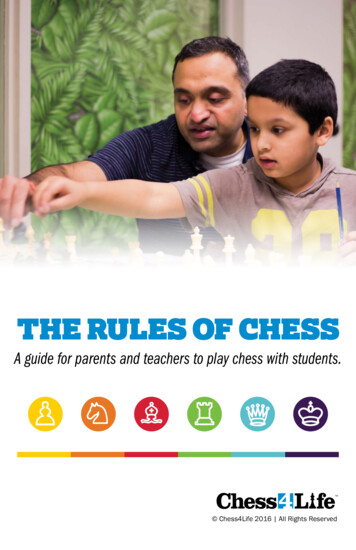
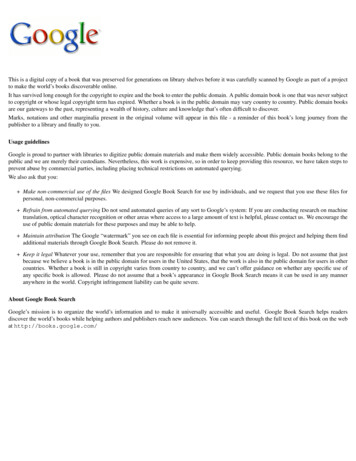
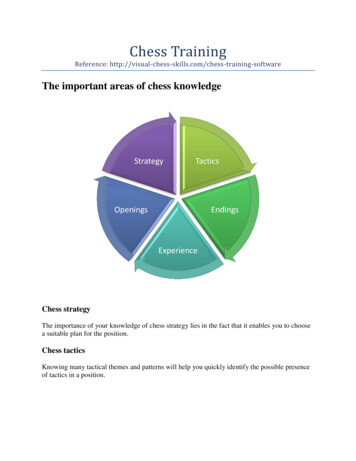
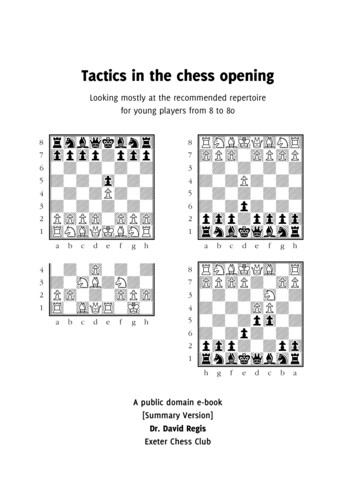
![[MS-ADFSOD]: Active Directory Federation Services (AD FS .](/img/1/5bms-adfsod-5d.jpg)
